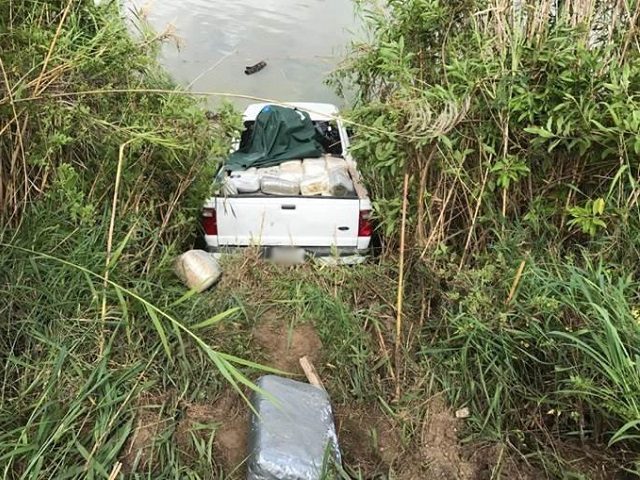On July 4 at approximately 7:30 am, Border Patrol agents working in the Rio Grande City station responded to a smuggling event in Escobares, Texas, at the banks of the river.
Agents observed a red Chevrolet pickup truck submerged in the border river and several suspects swimming back to Mexico. Agents witnessed five bundles, believed to be narcotics, and a raft crossing back to Mexico. Agents also saw 14 suspects in the water and on the Mexico side of the river in support of the operation.
These splashdowns routinely occur in areas where a border wall is not present.
The tactic requires a network of “halcones” or lookouts on both sides of the border. They are the eyes and ears of the cartel to monitor law enforcement and military movements. They also watch for rival smugglers and target them for extortion.
In the past, U.S.-based halcones commonly used hand-held encrypted radios, typically manufactured by Kenwood. Today, cell phones are utilized because they are more discreet and can handle multiple encrypted platforms per device. The Zello app is a favorite among Gulf Cartel lookouts.
These platforms can be remotely disconnected from the network in Mexico if seized by law enforcement in the United States.
Splashdowns are orchestrated—they are not contingencies. In some cases, the driver of a vehicle will wear a life preserver to keep from drowning.
The Gulf Cartel knows that Border Patrol agents cannot enter the water to perform an arrest as it is a violation of U.S. Customs and Border Protection policy.
Jaeson Jones is a retired Captain from the Texas Department of Public Safety’s Intelligence and Counterterrorism Division and a Breitbart Texas contributor. While on duty, he managed daily operations for the Texas Rangers Border Security Operations Center.

COMMENTS
Please let us know if you're having issues with commenting.